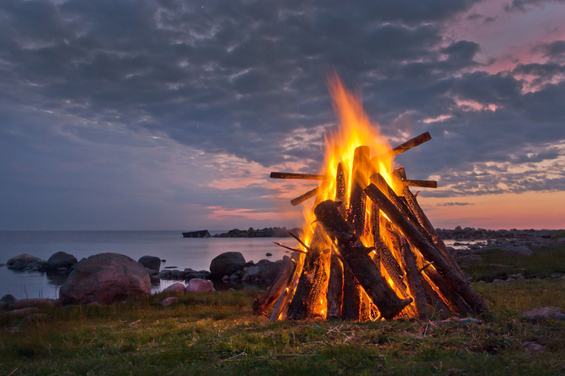
What’s this I hear about bows, arrows, bonfires and a holiday called Lag Ba’Omer?
Nestled two-thirds of the way between Passover and Shavuot during the period of the Omer, Lag Ba’Omer, which translates to “33rd of the Omer,” is an interesting day during the Omer, a period of somewhat measured anticipation: First, we experience the anticipation on an agricultural and ritual level as we observe the Torah-given mitzvah of counting the 49 days between the ancient spring barley offering and the first wheat offering in the Temple, and second, we experience it on a spiritual level as we approach the receiving of the Torah at Shavuot. In the time of Rabbi Akiva, a plague came (132-136 CE) during the period of the Omer, killing 24,000 of his students. Our tradition teaches that the plague was stayed on this 33rd day; this day also later marks the yahrzeit of one of Rabbi Akiva’s most prominent students who was fortunate to survive the plague, Rabbi Shimon Bar Yochai, the gifted author of the mystical work known as the Zohar.
The Omer is generally regarded as a period of semi-mourning, and until the 33rd day, it is traditional not to get a haircut, hold a wedding, or engage in other forms of public celebration. Once we reach the 33rd day, some of these restrictions are lifted and it’s a day filled with joy and celebration: weddings, picnics, games, and the bonfires that commemorate the spiritual light of Rabbi Shimon Bar Yochai’s teaching. Living as he did during the harsh decrees of the Roman emperor Hadrian, Bar Yochai was forced to seek refuge in a cave, in front of which a carob tree sprung up and a spring was said to issue forth, nourishing him for 13 years until they left following Hadrian’s death; this connection to the natural world also provides reason to head outdoors for the day.
Why bows and arrows in particular? The rainbow, first spread across the sky by God following the flood, was a reminder of God’s promise never again to destroy the world; in following generations, when the world might have been deserving of punishment, God would instead paint a rainbow across the sky. However, it is said that during Bar Yochai’s lifetime, his merit was so great that it provided protection for all, forgoing the need for a rainbow. Today, the custom of children going out to play with bows and rubber-tipped arrows is an echo of that beauty, as “bow” and “rainbow” are both called keshet in Hebrew.
Lag Ba’Omer is a great opportunity to pack a picnic (carob pods, anyone?), head to a state park or campsite, light a campfire and enjoy games with friends 
Rabbi Emily Mathis serves Temple Beth Shalom in Peabody.
